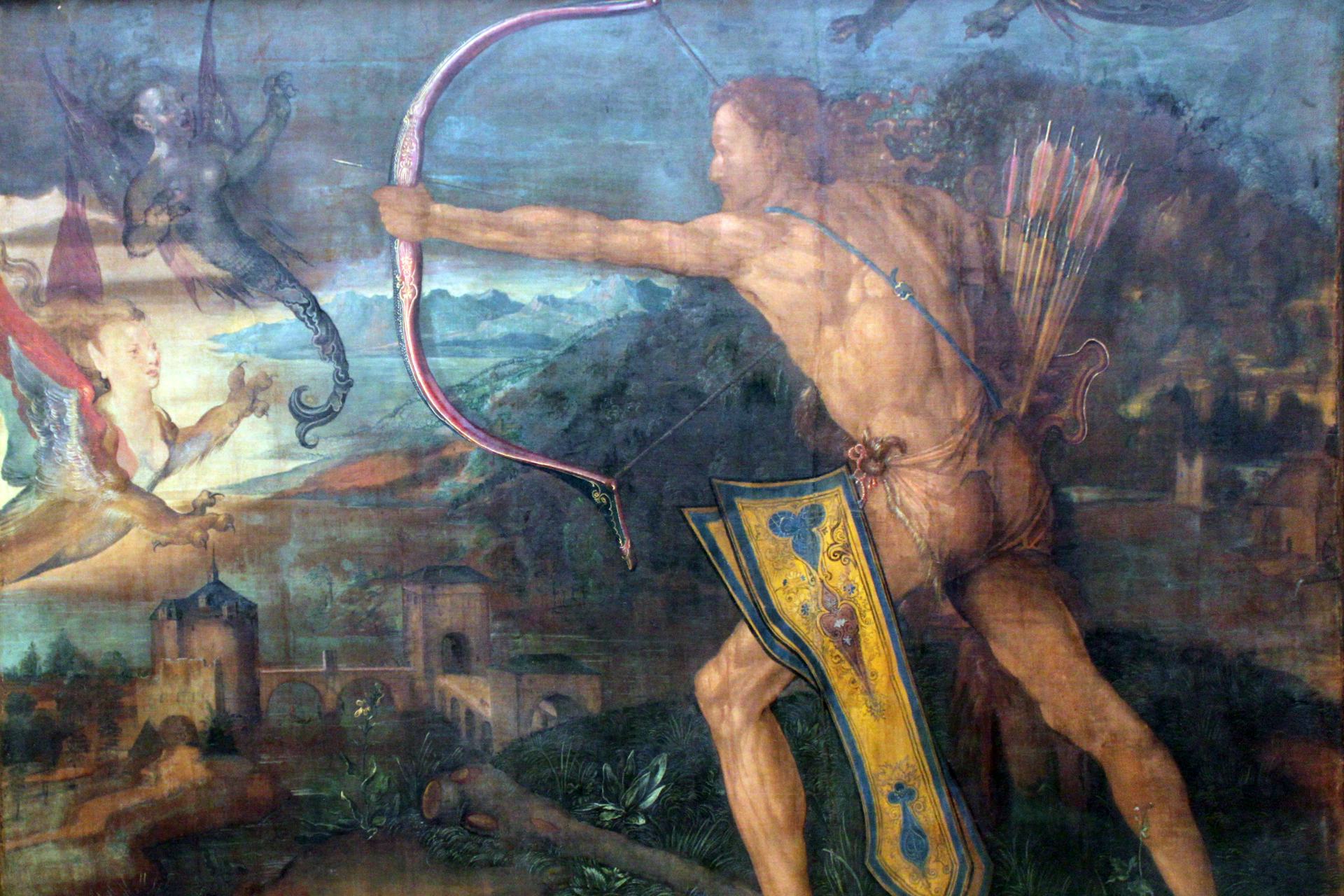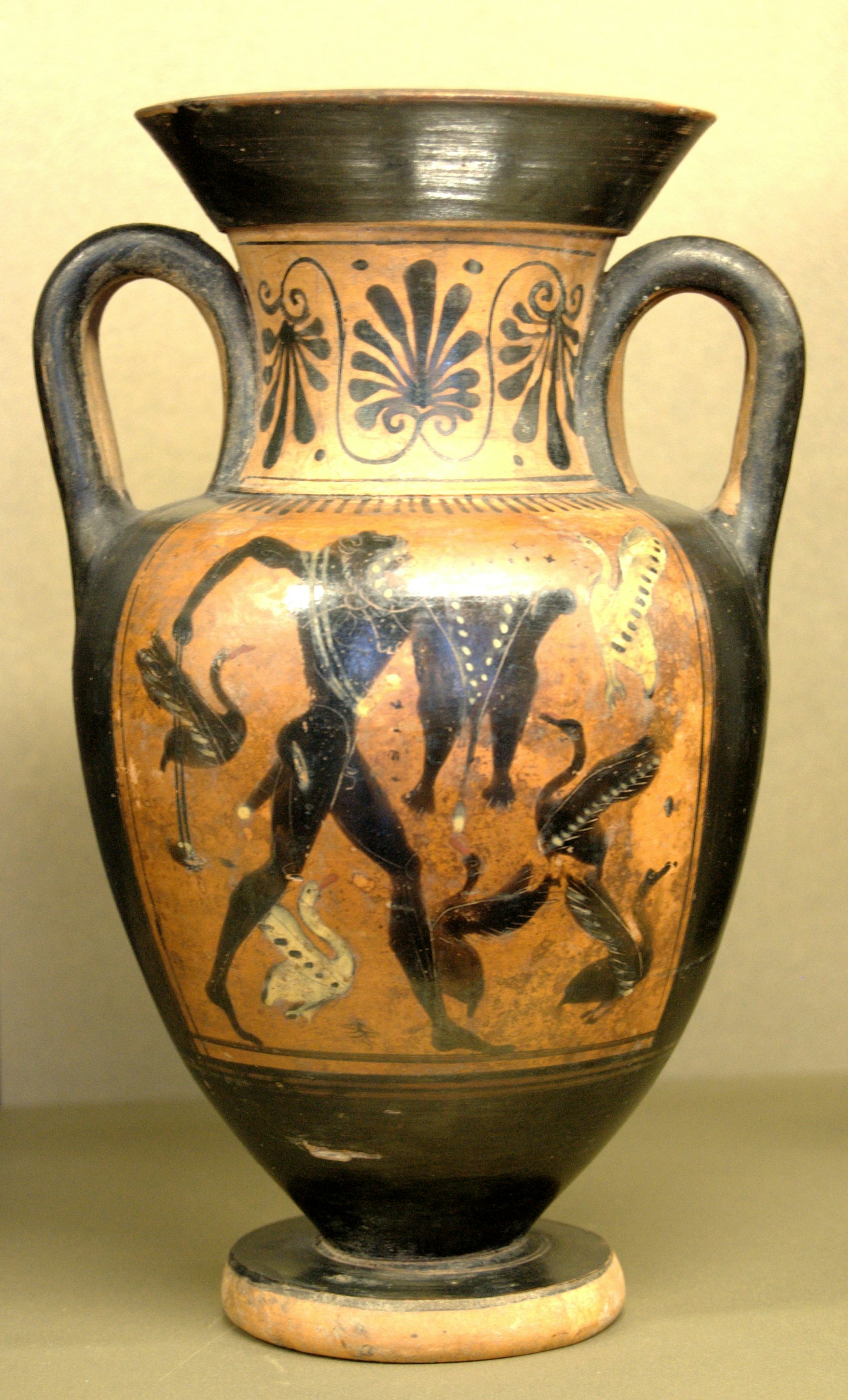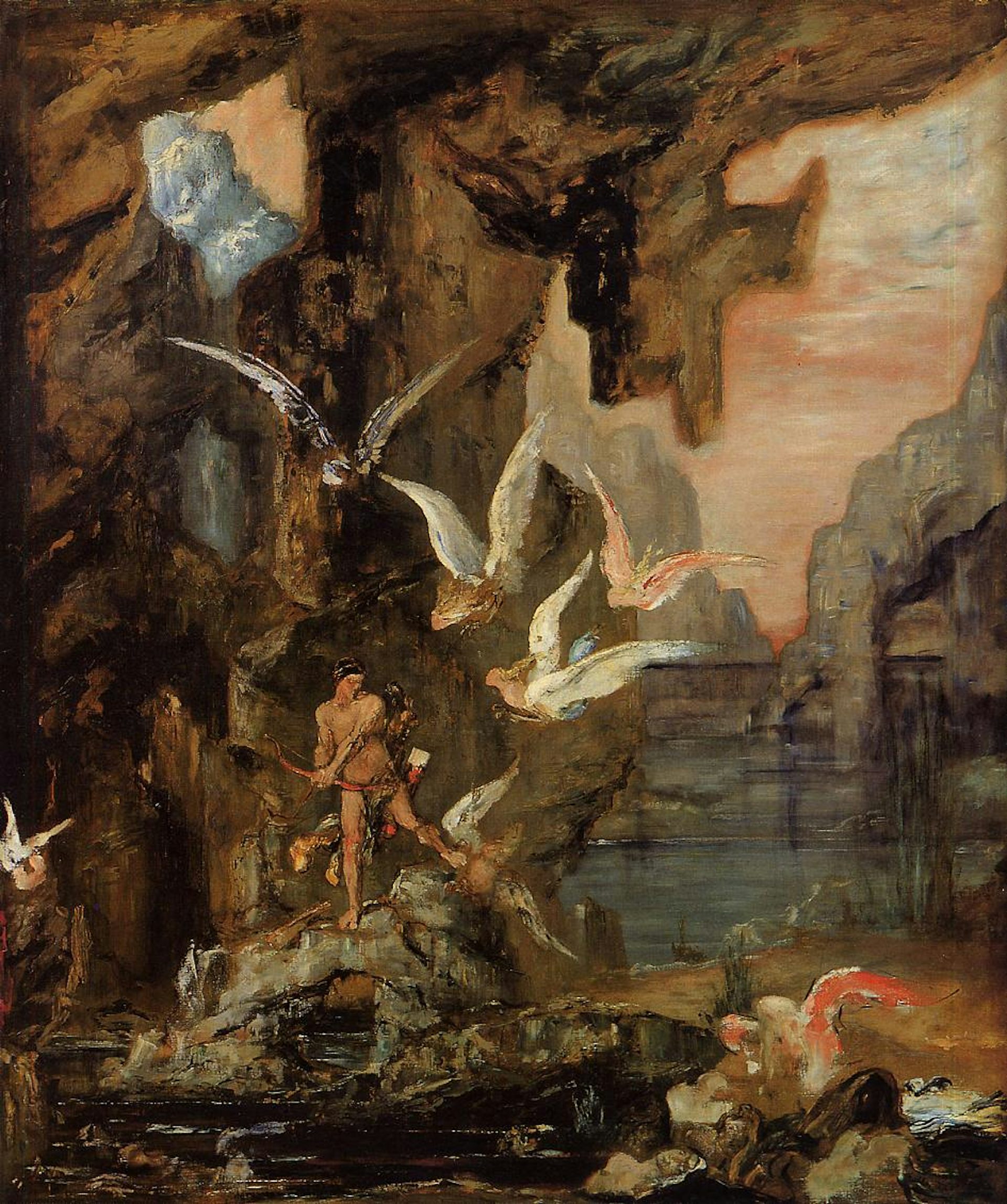Stymphalian Birds

Hercules Killing the Stymphalian Birds by Albrecht Dürer (ca. 1500)
Germanisches Nationalmuseum, NurembergPublic DomainOverview
The Stymphalian Birds are best remembered as the object of Heracles’ sixth labor. These birds choked the woods around Lake Stymphalus in northeastern Arcadia. Though they were originally imagined simply as pests, later accounts depicted them as fearsome, dangerous creatures who could use their bronze feathers as weapons and sometimes ate human flesh.
Heracles defeated the birds by frightening them with a rattle, which drew them out of the trees. He then either picked them off one by one with his arrows or allowed them to fly away from Lake Stymphalus (their fate varied depending on the source).
Etymology
The term “Stymphalian Birds” (Greek Στυμφαλίδες ὄρνιθες, translit. Stymphalídes órnithes) comes from the name of Lake Stymphalus in Arcadia, where the birds made their home.
Pronunciation
English
Greek
Stymphalian Birds Στυμφαλίδες ὄρνιθες (Stymphalídes órnithes) Phonetic
IPA
[stim-FEY-lee-uhn] /stɪmˈfeɪ li ən/
Attributes
Locales
The Stymphalian Birds lived near Lake Stymphalus in northeastern Arcadia.[1] They gathered in the woods around the lake in large numbers, perhaps as protection against wolves.[2]
Some sources claimed that after Heracles chased the Stymphalian Birds away from Arcadia, they made their new home on the island of Ares in the Black Sea.[3] The geographer Pausanias also knew of a breed of birds called “Stymphalian” that lived in Arabia; these creatures supposedly attacked people with their beaks, easily piercing even armor.[4]
Appearance and Abilities
In the earliest accounts, there does not seem to have been anything especially remarkable about the Stymphalian Birds except for their large numbers. But in later traditions, the birds acquired more aggressive and outlandish attributes, with several sources claiming they had bronze feathers that they fired as missiles at people and animals alike.[5] One author, Pausanias, even described the Stymphalian Birds as man-eating.[6]
Iconography
The Stymphalian Birds were not very popular in ancient art. When they were depicted, they usually looked similar to geese, with short bodies and long necks. Heracles was invariably shown slaughtering them, either with a sling, bow and arrow, club, or even his bare hands.[7]

Attic black-figure amphora by the Diosophos Painter showing Heracles fighting the Stymphalian Birds (ca. 500–490 BCE)
Louvre Museum, Paris / Bibi Saint-PolPublic DomainMythology
The Sixth Labor of Heracles
Heracles was sent to exterminate the Stymphalian Birds as the sixth of his Twelve Labors.[8] These labors were assigned by Eurystheus, king of Mycenae, who wished to destroy Heracles—a desire he shared with the goddess Hera. The first half of Heracles’ labors were more or less local affairs, pitting the hero against opponents in the Peloponnese, while the second half took Heracles to more exotic locations. The Stymphalian Birds were the last of Heracles’ “Peloponnesian Labors” (at least by Apollodorus’ count).
The Stymphalian Birds had infested the woods around Lake Stymphalus in Arcadia. In some traditions they were aggressive, though earlier accounts seem to have imagined them merely as pests, with the main complaint being their large number.
Heracles defeated the birds using a bronze rattle or castanets, which he either made himself or received as a gift from Athena. Using this tool, Heracles created a great racket that drew the birds out of the trees and into the open air. Sources are divided on what happened next. According to some, Heracles allowed the birds to fly away from Stymphalus unharmed.[9] But other sources claim he picked them off with his bow and arrow, shooting them out of the sky until they were all dead.[10]

Hercules at Lake Stymphalus by Gustave Moreau (ca. 1875–1880)
Gustave Moreau Museum, ParisPublic DomainWith his task fulfilled, Heracles returned to Mycenae. In some accounts, he delivered a few of the dead birds to Eurystheus as proof that he had done as he was commanded.[11]
The Argonauts
Some sources continued the tale of the Stymphalian Birds, suggesting that they fled to the island of Ares in the Black Sea after Heracles drove them from Arcadia. Later, when the Argonauts sailed past this island on their voyage to Colchis, the Stymphalian Birds pestered them until the heroes finally chased them away.[12]
Pop Culture
The Stymphalian Birds occasionally flit through contemporary adaptations of Greek mythology, though they are hardly among Heracles’ better remembered labors. These updated accounts diverge widely in their depictions of the birds. In the TV series Hercules: The Legendary Journeys, for example, there is a single Stymphalian Bird, a giant winged creature similar to a pterodactyl. In the Percy Jackson and the Olympians novels, on the other hand, the Stymphalian Birds are described as small and pigeon-like.